The State of SanDisk
by Kristian Vättö on December 5, 2014 8:00 AM EST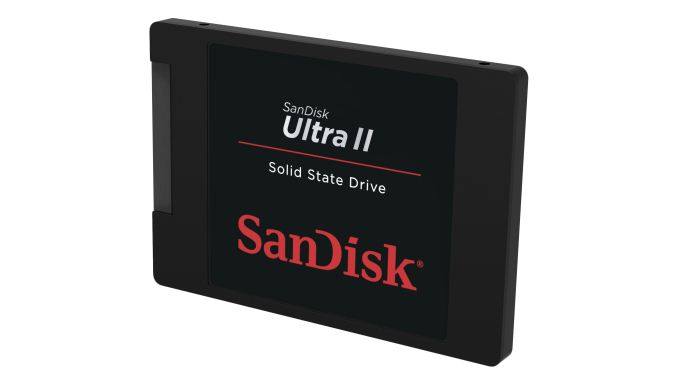
Back at Flash Memory Summit I had the opportunity to meet with all the key people at SanDisk. There is a lot going on at SanDisk at the moment with the Fusion-io acquisition, TLC NAND, and other things, so I figured I would write a piece that outlines SanDisk's current situation and what they're planning for the future.
I'll start with the client side. For SanDisk the big topic at this year's Flash Memory Summit was TLC NAND and we were given a sneak peek of the SanDisk Ultra II back at the show, which was then released a few weeks later. Since we have already reviewed the Ultra II, I'm not going to talk about the drive itself and its technical merits, but there are a few things that Kevin Conley, senior vice president and general manager for SanDisk's client business brought up about TLC and the client market in general.
I'm sure most of our long-time readers remember how SSD prices plummeted between 2010 and 2012. The reason for that wasn't a breakthrough in NAND technology, but merely the fact that all manufacturers increased their manufacturing capacity with the expectation of exponential NAND demand growth. As you can see in the graph above, the industry bit growth was over 60% year-over-year between 2010 and 2012, which lead to oversupply in the market and deflated the prices.
The reason why all NAND manufacturers invested so heavily on capacity increases was the popularity of smartphones and tablets; it was expected that the average storage capacity would increase over time. Basically, the NAND manufacturers assumed that decreases in NAND prices due to smaller lithographies would translate to higher capacity smartphones and tablets, but in fact the mobile companies chose to save on onboard storage and invest in other components instead (camera, SoC, etc.).
It's only been recently that smartphone and tablet manufacturers have started to increase the internal NAND and offer higher capacity models (e.g. the 128GB iPhone 6/6+), but even today the majority of devices are shipping with 16GB, which is the same capacity that the low-end iPhone 3GS had when it was introduced in 2009. Of course a large reason for the reduced sales of higher capacity smartphones/tablets has a lot to do with pricing, where 32GB devices often cost $100 more than the 16GB model.
Since the NAND manufacturers are now adding fab space at a slower pace, they are looking for alternate ways to increase bit growth and scale costs down – and that's where TLC kicks in. Because TLC packs in 50% more bits than MLC (three bits per cell instead of two), increasing the share of TLC production is an efficient way to boost bit growth without additional fab investments.
Currently about 45-50% of SanDisk's NAND production is TLC and by next year TLC will be overtaking MLC in terms of production volume. Note that SanDisk will have 3D NAND ready in 2016, so the graph doesn't imply that SanDisk will move to TLC-only production in 2017 – it is just the 2D NAND production moving to TLC since it will mostly be used in applications like USB flash drives and other low cost devices, while 3D NAND will be used in SSDs.
TLC will also be one of the driving forces behind average capacity increase. The main obstacle in SSD adoption is obviously the cost per gigabyte, and the lower production costs of TLC will help to bring the prices down. I think it's too early to say what kind of impact TLC will have on prices because currently there are only two drives available (SanDisk's Ultra II and Samsung's 840 EVO), but once more OEMs are ready with their TLC SSDs later this year and early next year, I believe we will see more aggressive pricing.
One of SanDisk's presentations at the show had a very interesting slide about the company's internal SSD deployment program. The question that is often debated when it comes to SSD endurance is the number of gigabytes that a user writes per day. There aren't really any studies with large sample sizes, but SanDisk's own study provides an interesting insight into typical office workloads.
What the data shows is that a typical office user only writes about 7GB per day on average and the number of people that write over 20GB is only a few percent, so very few users actually need more endurance than what TLC SSDs can offer (~20GB/day). Of course, everyone's usage is different and I doubt SanDisk's data takes e.g. media professionals properly into account, but it is still interesting and valuable data nonetheless.
Another thing I discussed with SanDisk was the obstacles for higher SSD adoption rate. While there is growth, the attach rate in the consumer space is still fairly modest and will remain as such for the next few years at least. Price is obviously one of the most important factors as hard drives are still an order of magnitude cheaper when measured in price per gigabyte, but I'm not sure if absolute price and capacity are the only hurdles anymore. I mean, 256GB is more than sufficient for the majority of users – especially now that we live in the era of Netflix and Spotify – and at ~$100 it's fairly affordable, so I think we have reached a point where the price is no longer the barrier preventing users from upgrading to SSDs.
This is actually the part where we ask for your, our readers, help. What is it that we or manufacturers like SanDisk could do to boost the SSD penetration in the market? Would live demonstrations at malls and other public places help? Or upgrade programs where you could take your PC to a store and they would do the upgrade there for you? Let us know your ideas in the comment section below and I'll make sure to bring them up with SanDisk and other SSD manufacturers. Remember that we are talking about the masses here, so think about your parents for instance – what would it take for them or other people who are not very comfortable around computers to upgrade their PCs with an SSD?
The one huge problem is of course the PC OEMs and convincing them to adopt SSDs for mainstream laptops. The race to the bottom practically killed the profits in the PC industry, which is why most of the mainstream (~$400-600) laptops have such a bad user experience (low-res TN panels, cheap plastic chassis, etc...). With already razor thin margins, the OEMs are very hesitant about increasing the BOMs and taking the risk of cutting their already-near-zero margins with SSDs. I know SanDisk and other SSD OEMs have tried to lobby SSDs to the PC OEMs as much as possible, but anything that adds cost gets a highly negative response from the PC OEMs.


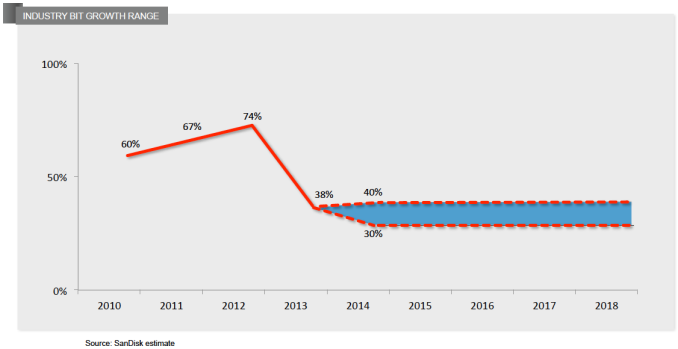
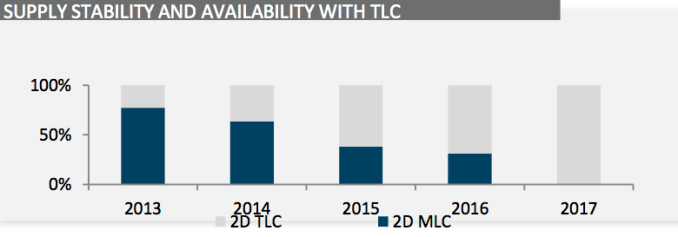
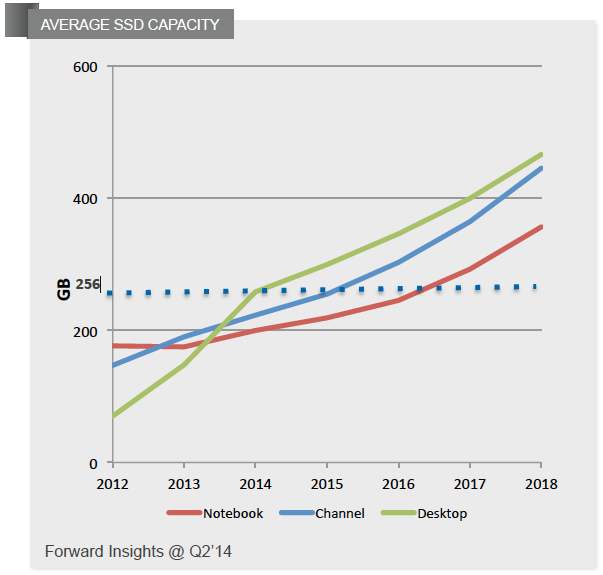
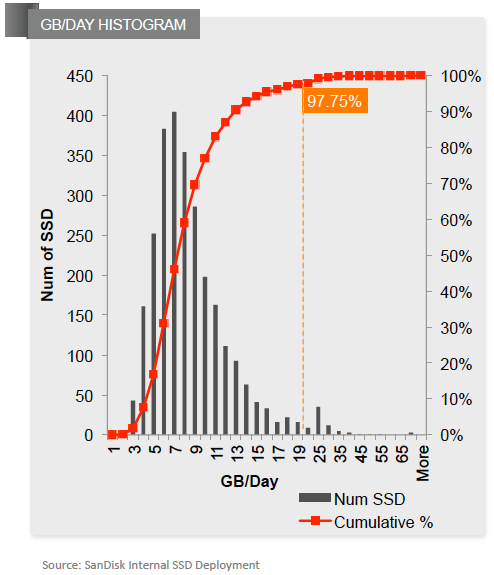









132 Comments
View All Comments
MrSpadge - Friday, December 5, 2014 - link
BTW: I know this could already be done relatively easily using the libraries of Win 7/8. But I'm pretty sure most people are not using them, let alone have given relocating the corresponding storage locations a thought.Conficio - Friday, December 5, 2014 - link
I think what would work for new OEM laptops with SSD is a "SSD inside" kind of campaign with jingle and pretty face. Add a few real benefits like longer battery life and you are good to go.Or how about bundling the new SSD with online backup secure and encrypted and hassle free. May be even cold storage for life of all those pictures and documents. To get out of the big spinning rust disk vs smallish SSD? Add it some automatic download and archive of the paper-less bills and CC statements and tax returns, etc. and you are golden.
My parents or other mainstream PC users can't be convinced to "upgrade" their PC by anything until the next PC. The labor cost of servicing is just to high. They are easier convinced to buy a new laptop/PC if they can see the tangible benefits above.
oxwax - Friday, December 5, 2014 - link
One word: INFOMERCIAL. If the general public can be pursuaded to buy junk like My Clean PC to make his or her computer faster, a very well structured infomercial that actually "informs" the general public that his or her PC is hampered by the slow hard drives installed by OEM should do amazingly well. The general public does not even know that SSDs exist, let alone the benefits(60 - 120MB/s vs 300 - 550MB/s). Showing side-by-side comparisons would help. Include cloning software and ***** A FREE OPTICAL DRIVE BAY CADDY **** would almost ensure success. Could possibly be bigger than the George Foreman Grill, if correctly implemented!sheh - Friday, December 5, 2014 - link
The major improvement from SSDs is usually not the linear read speed, but the random access.oxwax - Friday, December 5, 2014 - link
I strongly agree, but we are considering the general public. Steve Jobs had it correct with the KISS (Keep It Simple Stupid) template for marketing. Have you ever sat down with a professional that has a degree in a very advanced science(like a neurosurgeon or endocrinologist), and he or she wants to explain things to you thoroughly in professional jargon? Most people get lost and tune out the conversation. The only thing that general public wants is for the product to perform as expected as easily and simply as possible with as few hiccups as possible. You can even break it down in layman's term. I like to use cars to explain computers to my clients. The CPU is like the engine, RAM is like the fuel injection, and storage are like tires. If you put cheap tires on your Ferrari, your Ferrari will only go 120 MPH. If you put the best tires in the world, your Ferrari will perform to the top of its capabilities. Adding an SSD like putting 550 MPH tires on an electric engine. Sometimes I'll even go as far as describing how having a Core i infrastructure is like having a drag strip between the RAM and CPU vs an Indy car track for Pentium processors. Everytime, people seem to appreciate that I know these things, but he or she usually begins to just state "I just want it to work like your saying." So, yes. We geeks will completely understand the finer details, but the general public just wants to KISS it!name99 - Friday, December 5, 2014 - link
"This is actually the part where we ask for your, our readers, help. What is it that we or manufacturers like SanDisk could do to boost the SSD penetration in the market? "Stop chasing benchmark speed at the expense of everything else. Streaming r/w speed is nice, yes, but it appears to be coming at the expense of other things that, for AVERAGE users are more important. This primarily means:
STABILITY/SAFETY. This is a huge one. I mean, for crying out loud, it is STILL an issue. Samsung, supposedly the safest brand in terms of firmware that works, had to release an update two months ago to resolve firmware issues. It's 2014, not 1011. This shit should not still be happening.
If the industry as a whole wants to expand, it should create some sort of "Designated as not a PoS" certification program which takes drives, tortures them in a variety of ways, and certifies that they are SAFE SAFE SAFE. They don't screw up when they lose power randomly. They don't screw up when they are running at 99% full capacity. When they DO fail, they fail by telling you that writes no longer work, and by allowing reads to access 100% of the drive so you can recover (even if you were too foolish to run a continual backup). etc etc.
And if the industry is so damn short-sighted that it insists on crippling this certification program, so that its tests aren't demanding, aren't trustworthy, are full of loopholes, well then, boo hoo --- it damn well deserves to be stuck in its current ghetto of limited sales and desperate attempts to try to grow.
After this (by far the most important) issue of stability and safety, the second most important issue is
- optimize for random r/w rather than streaming. Yes streaming is nice and you can get big studly multi-100MB/s numbers that sound good. But what actually matters for MOST users' daily performance is the random access numbers
- get the maximum power draw down. As long as the maximum power draw (usually for random writes) is over 2.5W, these devices are basically not usable as external drives because they are too dangerous to use when connected to USB2. They'll seem to work just fine, then hang as soon as a stream of writes hits them. The external drive market may not be huge, but it's not negligible either.
- The second aspect of the external market is that, where possible (which I assume means USB3) you still need to support TRIM and SMART. Just because a drive is external doesn't mean I no longer care about its performance or its longevity/safety.
Basically, vendors need to spend less time worrying about dick-measuring benchmarks and more time thinking like Apple about what is best for the average customer.
stunta - Friday, December 5, 2014 - link
> what would it take for them or other people who are not very comfortable around computers to upgrade their PCs with an SSD?Friends and family who are not tech-savvy don't know what an SSD is. Solve that problem first.
Dadofamunky - Saturday, December 6, 2014 - link
If you have an SSD, CPU speed becomes less vital to overall performance. If the BOM is 430-$50 higher with an SSD, you can easily make do with an i5 instead of an i7. Easily. Most CPU cycles on these clunky laptops are completely wasted. Fatter CPUs and spindle drives also are heat bombs in every laptop. An SSD solves all of these problems. The OEMs can keep buying their contracted Intel chips - they just get to build better-balanced cheap laptops that their users will actually like to use. I don't get why SanDisk and other companies don't recognize this.beginner99 - Saturday, December 6, 2014 - link
demonstration of same laptop one with ssd one with hdd. Both have same windows image installed and it should be a heavily used, old installation not a fresh one. Then users can compare directly how much faster the SSD laptop will be down the road in 1-2 years.dareece - Saturday, December 6, 2014 - link
To comment on the the last paragraph; the industry is not ready to offer lower performance/lower cost SSDs to the consumer market just yet (You can already purchase laptops with SSDs in limited configurations). It's all about getting as much revenue up front before selling out to the masses who always want the lowest price. The manufacturing cost associated with creating larger capacity drives and faster speeds needs to be paid for by the OEMs first to allow the overall costs to be reduced so that they can be passed on the non-OEM end-user. This is standard industry practice in the technology sector.